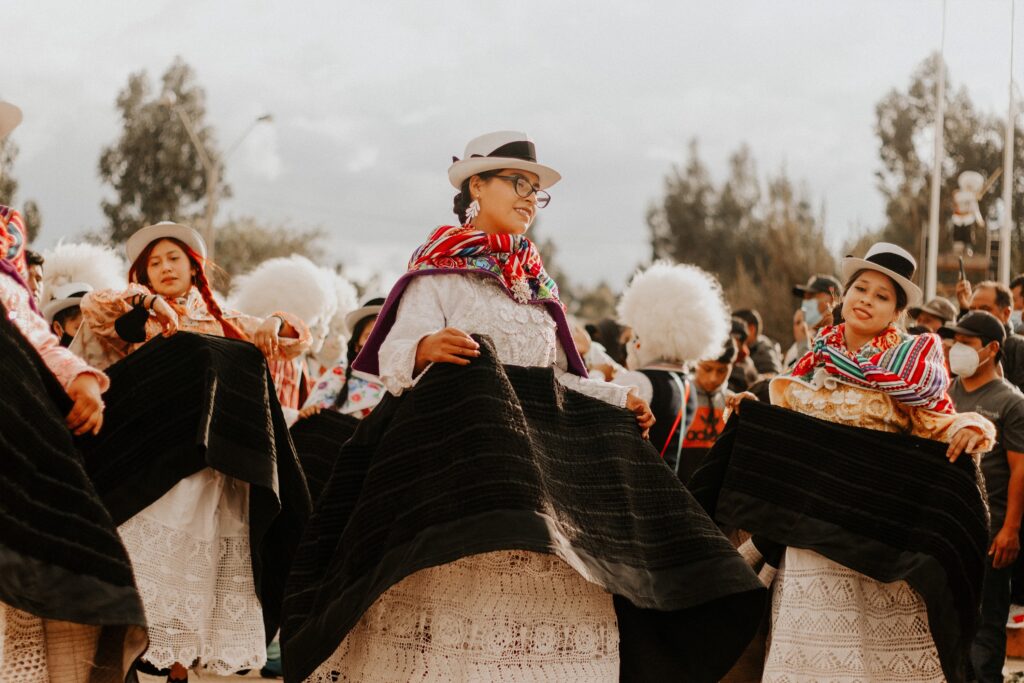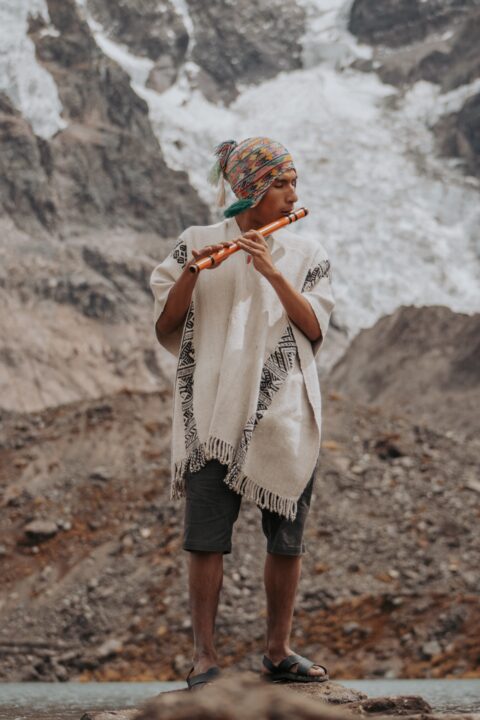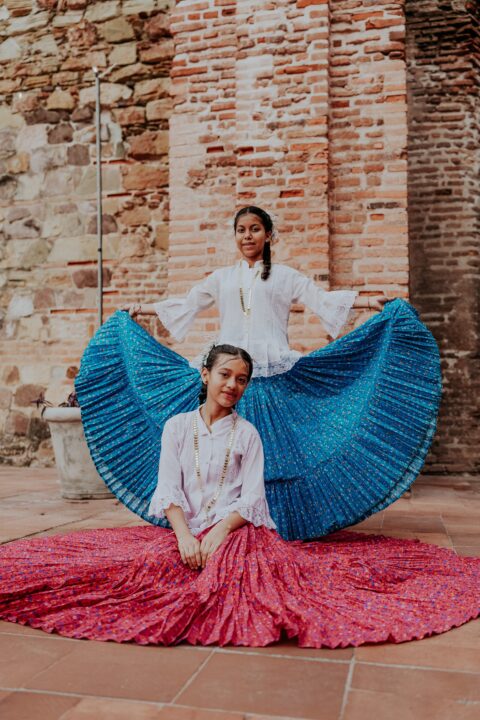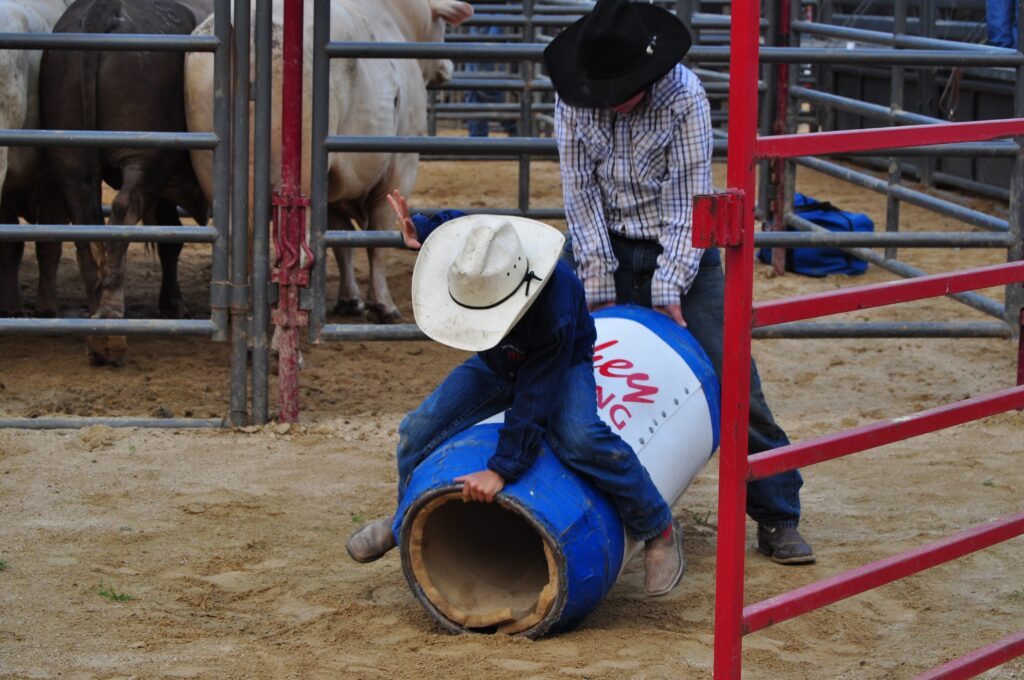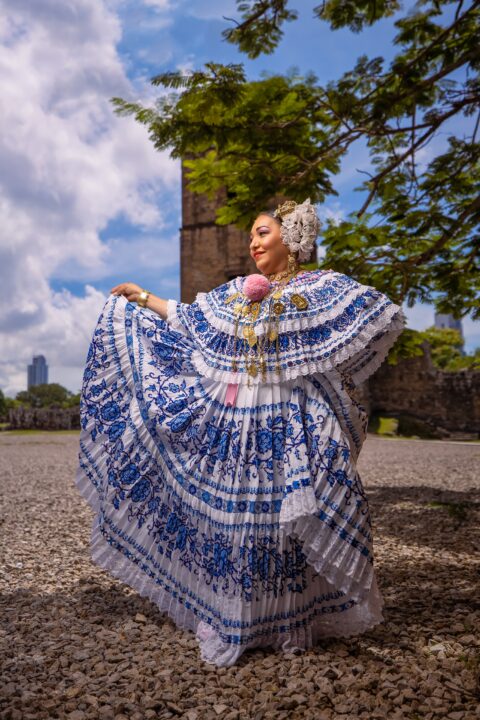Ecuador is a country in the Andes with a rich culture and heritage, which is reflected in the Ecuadorian traditional dress that is still in use in different regions. There is no unifying Ecuadorian traditional clothing, though, as Ecuador is made up of so many diverse communities.
The traditional clothing of the various tribes of Ecuador varies as a result of their varied geographic origins. The nation, including its tribal communities, undoubtedly has an intriguing history.
Firstly, it is essential to comprehend that there are several cultures in Ecuador and every level of this extremely stratified community is well represented and composed of an enormous variety of cultures.
The Bright Color of The Ecuador Traditional Clothing
The most outstanding feature of indigenous Ecuadorians’ traditional clothing is their use of rich, vivid colors in their ponchos, shawls, and scarves. The variety of native clothing in Ecuador is an indication of the tenacious conviction in their identity that the diverse communities have been able to uphold throughout the years.
Some of the attire that today’s indigenous people proudly don is actually an adaptation of the Spanish-inspired outfits from the 16th century, which were first donned as a type of uniform to determine which hacienda a particular individual belongs to. It is a mystery how they expertly balance their hats on their heads.
The rich red of the scarves and wraps donned by the indigenous people of Salasaca is obtained from cochineal, which is extracted from the crushed bodies of female insects (Dactylopius coccus) that live on the Opuntia cactus. The deep indigo blue worn by the Saraguro comes from Indigofera, a tropical bean-producing plant. Both of these hues are produced naturally.
The Ecuador Traditional Clothing in The Different Regions of The Country
There is a specific style of clothing that Ecuadorians maintain. Each region of Ecuador and the Galapagos Islands has its own distinctive men’s and women’s clothing, and it is easy to distinguish them by their clothing since it reflects the distinctive cultural differences of that area.
We’ll give a quick overview of each Ecuador traditional clothing donned in Ecuador’s many regions in this article.
1. The Otavaleños in Otavalo
-

rodrigo arrosquipa, pexels, 14483655.jpg
In Quito, it’s typical to see the native Otavalenos. Otavalo, a little hamlet around 80 kilometers north of Quito, is where most Otavaleos reside. The men can be identified by their white ponchos, fedoras, or felt hats, as well as their calf-length white pants.
The Otavaleos men grow the shimba, a long braid that reaches their waists, as another aspect of their distinctive way of life. The Ecuadorian army doesn’t demand men trim their Shimbas while enlisting because it is such a significant symbol of Ecuadorian indigenous culture. The Shimba is not required to be severed when the indigenous men serve in the Ecuadorian military.
Women dress similarly to men, though frequently in colors that contrast with them. Otavalo men wear white slacks with a blue poncho, while women often wear a white shirt with a blue or black skirt.
Shawls are a common accessory for ladies, but jewelry has a deeper cultural meaning. Particularly Otavalo women dress with red coral bracelets and gold bead necklaces. The traditional clothing worn by women most closely resembles Inca garb everywhere in the Andes.
2. Sierra Women from The Highlands
-

luis quintero, pexels, 18263170.jpg
Women from diverse Sierra towns wear pleated skirts in vibrant colors with hand embroidery at the hems. However, due to the diversity of cultures, each one may have its own unique style of clothing or headgear. Woolen shawls are widely worn by women to carry babies or shopping on their backs.
3. Tribes of the Ecuadorian Amazon’s Tropical Rainforest
Traditional feathered headdresses and other ornaments with ethnic or tribal connotations are still donned by numerous tribes in Ecuador’s tropical jungle. Despite the fact that many youngsters from these tribes have the ability to mix and match these accessories with other wear that has a more Western aesthetic.
4. The Coastal Townspeople
The coastal community, which is sandwiched between mountains and the coast, has lost a lot of its cultural and traditional practices. Their traditional attire generally resembles that of the Sierra people. Although some coastal communities don’t dress traditionally.
Males now commonly don ‘Guayaberas,’ a loose-fitting shirt that frequently takes the place of a jacket, while women typically don light dresses in coastal locations. However, some ethnic groups have more recognizable clothing traits than others.
5. The Montubio People
-

thomas shockey, pexels, 6368119.jpg
The inhabitants of Montubio, which include the provinces of Manab, Los Roses, Guayas, and Santa Elena, are distinguished by their use of machetes and cowboy hats. They don’t dress traditionally, but they wear rubber boots.
They are hardworking, fiercely nationalist, and rural people who cherish their own traditions and cultural traits. Its predilection for agricultural pursuits, its military spirit, and its demonstrated mastery of horse taming are some of its most remarkable socioeconomic and cultural traits. Because of their well-known prowess with horses, Montubios make participating in rodeos their primary form of recreation and celebration.
The Montubio male usually labors in rice fields and banana plantations while donning toquilla straw hats, white shirts, and shorts, and he also wears a machete around his waist. To prevent heat and repel mosquitoes, women typically dress in more comfortable, cooler white clothing.
Men complement their everyday clothing with colorful scarves during popular and religious festivals. The women, on the other hand, dress in broad, vibrant skirts that make them appear more showy when dancing.
6. Tsáchila
Another well-known cultural group is the Tsáchila. The Spanish started calling them Colorados, which means “red-colored people,” even though the word Tsáchila properly means “genuine people.” They reside in the subtropical lowlands of Santo Domingo County, currently known as Santo Domingo de Los Tsáchila.
The Tsáchila still wear their distinctive striped clothing even though they no longer comply with their traditional dress standards. Men wear more somber black or blue skirts striped with white, while women like colorful skirts with bold horizontal stripes.
The Tsáchila’s color identity permeates both their outward appearance and their persona. They used achiote dye for coloring their hair and bodies, thus explaining how they received their moniker. Try noting a distinctive hairdo if their red hair doesn’t tip you off.
Males typically shave their side hair, then apply oil to harden the remaining hair into a peaked cap. Folklore has it that the Tsáchila did not start coloring themselves red until the Spanish arrived and brought smallpox with them. The shamans claimed that the death-wielding disease was possibly treated with the achiote dye.
7. Ecuador’s traditional clothing for women
The Ecuadorian women’s attire resembles that of the Incan garb worn in the Andes. Typically, a shawl, a blue skirt, and a white blouse are worn. The most popular types of jewelry worn by ladies are bracelets made of red coral and layers of necklaces with mostly gold beads.
8. Ecuador’s traditional clothing for religious events
Easter is a significant event in Ecuador, which has a 90% Catholic population. Christians in Quito observe Easter as a time to remember Jesus Christ’s suffering and death. This acknowledgment manifests itself on Good Friday in the form of a three-hour-long, colorful procession that winds through the streets of the ancient city.
In order to maintain their anonymity while confessing their sins in public, thousands of penitents known as Cucuruchos don purple robes (representing penitence) and purple hoods (representing humility). They tortured themselves in various ways throughout the 5-kilometer mournful march.
Others pull bulky bands from their ankles, while some people walk barefoot. Others wear thorny crowns or wrap barbed wire around their heads, while others bear the discomfort of cactus crosses wrapped around their backs. White ropes are used to beat men’s naked backs. Believers who hold heavy wooden crucifixes, frequently unable to support the weight, bear the toughest burdens.
Numerous women wearing purple and lace veils may be seen at the end of the parade. They stand in for Saint Veronica. Catholics believed Veronica was the person who wiped Jesus’ face prior to him going to the cross. They believed that, after some time, his image appeared on the surface of the fabric.
9. Ecuador’s traditional clothing for social gatherings and business events
-

hector peralta, pexels, 17992236.jpg
Countries all across the world are gradually altering their dress codes to a more “smart casual” personal appearance. However, Ecuador continues to adopt a conservative stance, particularly in the cities with a strong financial sector like Quito, Guayaquil, and Cuenca. Suits, blazers, and formal business attire are frequently seen.
In coastal areas like Guayaquil, businesspeople are more frequently seen wearing dressier formal attire like shirt and dress slacks than a suit.
The general consensus among professionals in Ecuador is that personal appearance is important since it contributes to a sense of professionalism. Neglecting your personal appearance may create the appearance of disarray, which could negatively impact your prospects of negotiating a favorable deal or developing a lasting business connection.
Top 10 Ecuador traditional clothing.
Here’s a list of 10 Ecuadorian traditional clothing:
1 The Aguayos
2.Faldas Choti
3.Montunos
4. Pañuelos
5. Mantillas
6.Ponchos
7. Polleras
8. Sombreros
9. Fajas
10. Huipiles
In conclusion, Ecuador’s traditional clothing and culture are strongly interconnected. Every region has its own traditional attire, which frequently reflects its history and traditions. For instance, the “traje” of the highlands is a representation of the indigenous Quechua people’s culture.
Ecuador’s traditional clothing also has unique symbolism associated with the styles and patterns. For instance, geometric patterns that depict the elements of nature are frequently found on “chumpis,” or belts.
Depending on the occasion, Ecuadorian traditional clothing also varies. For instance, the “pollera” is a more formal style of clothing worn for important events like weddings and religious ceremonies. Another unique type of clothing that ladies frequently wear at festivals is the “montera.”
Seasonal differences also drastically affect Ecuador’s traditional clothing. For instance, clothing for warmer climates is frequently made of lighter materials like cotton and linen, whereas clothing for colder climates is frequently made of wool. Additionally, there are specific dress designs for particular celebrations, such as “la diablada,” which is worn at the Festival of the Devil.
A unique and varied aspect of Ecuadorian culture is its traditional clothes. The distinctive histories and customs of Ecuador’s several regions are reflected in the various dress trends. The beauty and significance of Ecuador’s traditional clothing are enhanced by the use of natural colors and embroidery. Many individuals in Ecuador take great delight in wearing Ecuador’s traditional clothing because it is a significant aspect of their culture.
